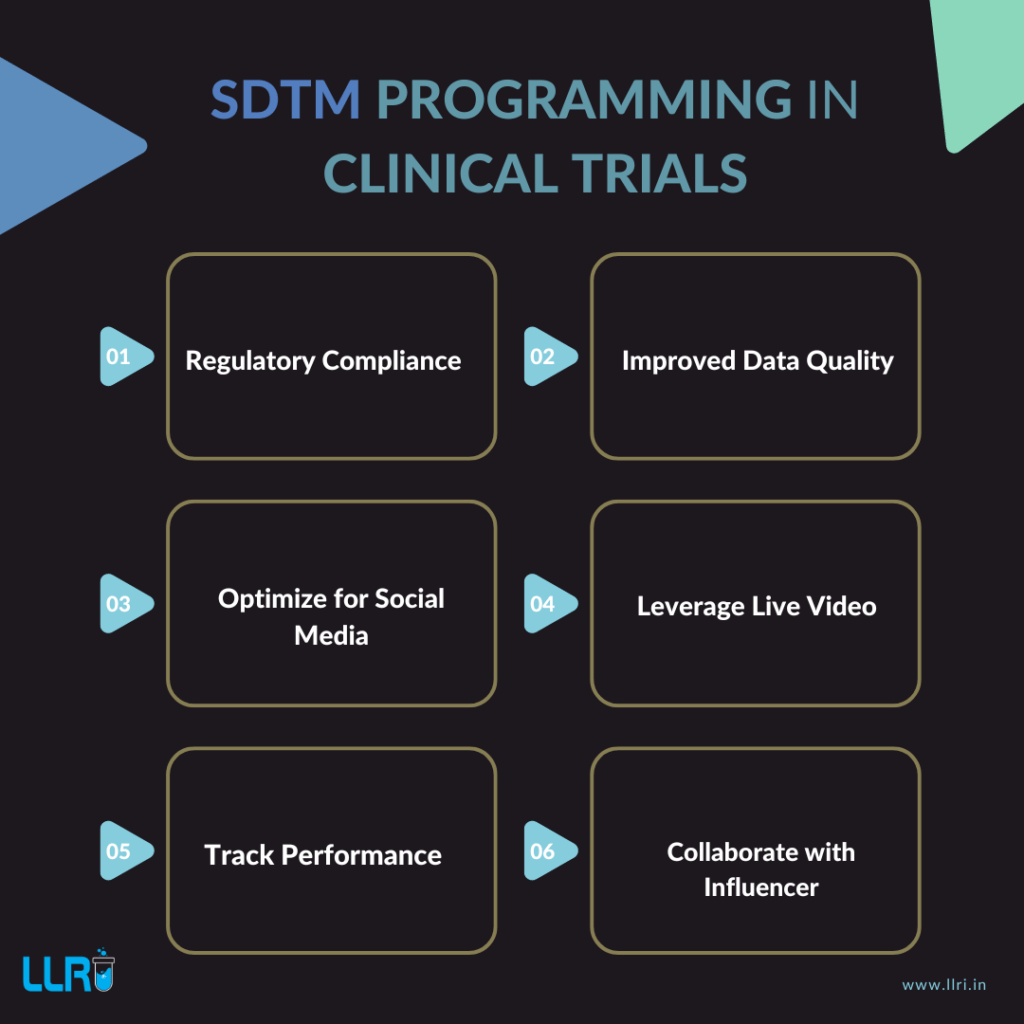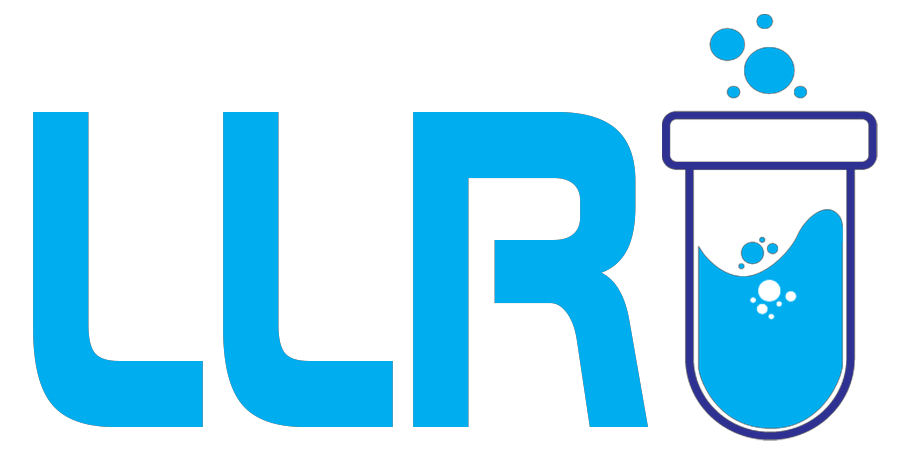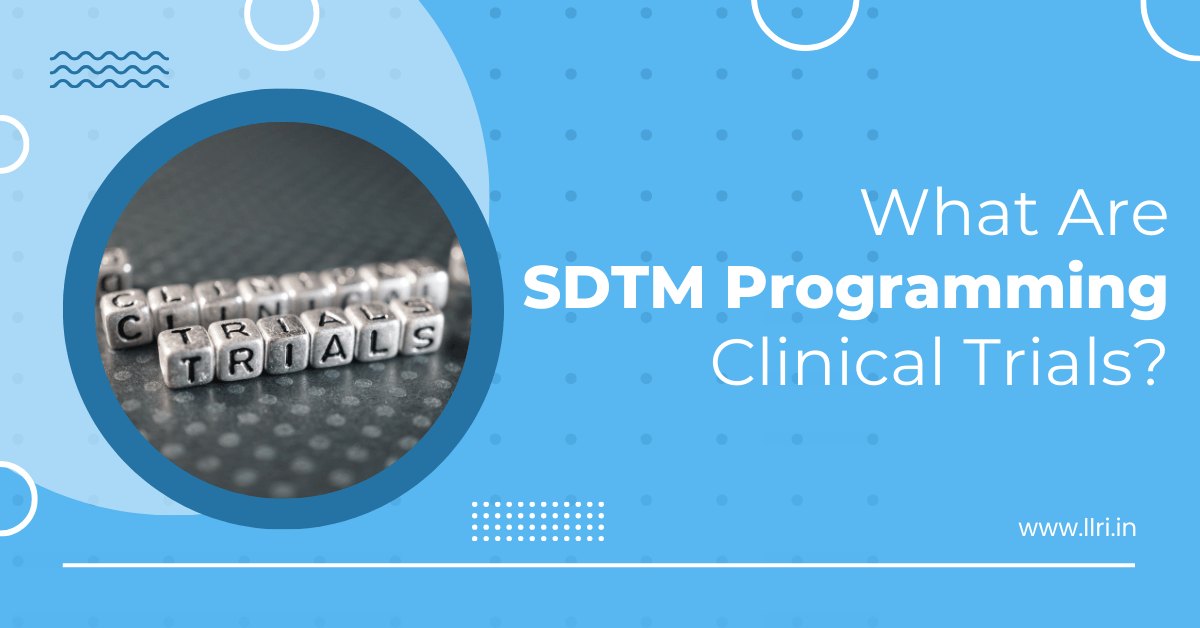What Are SDTM Programming Clinical Trials: The data generated in clinical trials are enormous. From patient demographics to lab results and adverse events, maintaining the massive amount of data is central, and to ensure that this data can be easily understood, shared, and analyzed, the Standard Data Tabulation Model (SDTM) is used.
Therefore, in this blog by LLRI, we will explore what is SDTM programming clinical trials, including an in-depth look at SDTM mapping, SDTM datasets, and SDTM variables that play an important role in clinical research.
This blog contains the following:
- SDTM programming clinical trials
- SDTM mapping clinical trials
- SDTM datasets clinical trials
- SDTM variables clinical trials
What Is SDTM Programming Clinical Trials?
SDTM stands for the Standard Data Tabulation Model. It is a framework used in clinical trials to organize and standardize data collected during the trial process. When asking, “What is SDTM programming clinical trials?” the answer lies in how clinical data is prepared for submission to regulatory authorities, such as the U.S. Food and Drug Administration (FDA). SDTM programming ensures the data adheres to established formats and guidelines so that it can be reviewed in the proper manner.

Why Is SDTM Important in Clinical Trials?
SDTM programming is essential for regulatory submissions, ensuring that data is consistent and easily interpretable. It helps in the smooth transfer of data between various stakeholders, including pharmaceutical companies, contract research organizations (CROs), and regulatory agencies.
What Are The Benefits Of SDTM Programming Clinical Trials?
- Consistency: All clinical trial data adheres to a consistent structure, making it easier to analyze.
- Compliance: SDTM programming ensures that the data complies with regulatory requirements, facilitating smoother submissions to agencies like the FDA.
- Efficiency: By following SDTM guidelines, data can be processed and reviewed more quickly, speeding up the approval of new treatments.
SDTM Mapping Clinical Trials
The process of SDTM mapping clinical trials is important in the data management process. Mapping involves converting the raw data collected during a clinical trial into the SDTM format. This step is important because it makes sure that all data points are captured accurately and in the correct format for submission.
4 Key Steps In SDTM Mapping
- Identify source data: The first step is to identify the raw data that needs to be mapped to the SDTM format.
- Mapping specifications: Next, mapping specifications are created. These specifications detail how each piece of raw data will be transformed into the SDTM format.
- Programming: In this step, SDTM programmers write code to convert the raw data into the SDTM format based on the mapping specifications.
- Validation: Finally, the mapped data is validated to ensure accuracy and compliance with SDTM standards.

SDTM Datasets In Clinical Trials
SDTM datasets clinical trials are the result of the SDTM mapping process. These datasets are organized into different domains, each representing a specific type of data collected during the trial. For example, there are domains for demographic data, adverse events, laboratory results, and more.
Common SDTM Datasets
- DM: Demographics
- AE: Adverse Events
- LB: Laboratory Tests
- VS: Vital Signs
- CM: Concomitant Medications
Each dataset contains standardized variables that make sure the data is consistently formatted and easy to analyze.
SDTM Variables In Clinical Trials
SDTM variables clinical trials are essentially the building blocks of SDTM datasets. These variables represent specific data points within each domain and are central to the process for organizing and analyzing clinical trial data. Learning and understanding these variables are important for anyone involved in SDTM programming.
Commonly Used SDTM Variables in Clinical Trials
| Domain | Variable | Description |
| DM | STUDYID | Study Identifier |
| DM | USUBJID | Unique Subject Identifier |
| AE | AETERM | Adverse Event Term |
| LB | LBTEST | Laboratory Test Name |
| VS | VSTEST | Vital Signs Test Name |
| CM | CMTRT | Concomitant Medication Name |
| AE | AESTDTC | Adverse Event Start Date |
| VS | VSTESTCD | Vital Signs Test Code |
| LB | LBTESTCD | Laboratory Test Code |
| CM | CMDECOD | Concomitant Medication Standardized Name |

On A Final Note…
So, what is SDTM programming clinical trials? It is the process that converts raw data collected during clinical trials into a standardized format, ensuring accuracy, consistency, and efficiency in regulatory review.
The use of SDTM mapping clinical trials, SDTM datasets clinical trials, and SDTM variables clinical trials allows for the clear organization of trial data, which is fundamental to the approval process.
FAQs
-
What is SDTM programming?
SDTM programming refers to the process of organizing and standardizing clinical trial data into the SDTM format for regulatory submission. It ensures that all data follows a specific structure that meets industry standards.
-
What is SDTM in clinical trials?
In clinical trials, SDTM refers to the Standard Data Tabulation Model, which standardizes the way data is collected, organized, and submitted to regulatory authorities.
-
What is the basic concept of SDTM?
The basic concept of SDTM is to create a consistent framework for clinical trial data. This allows for easy sharing, analysis, and submission of data in a standardized format.
-
What is the SDTM format?
The SDTM format is a specific structure that defines how clinical trial data should be organized into domains (e.g., demographics, lab results). It includes predefined variables and values to ensure consistency across trials.

